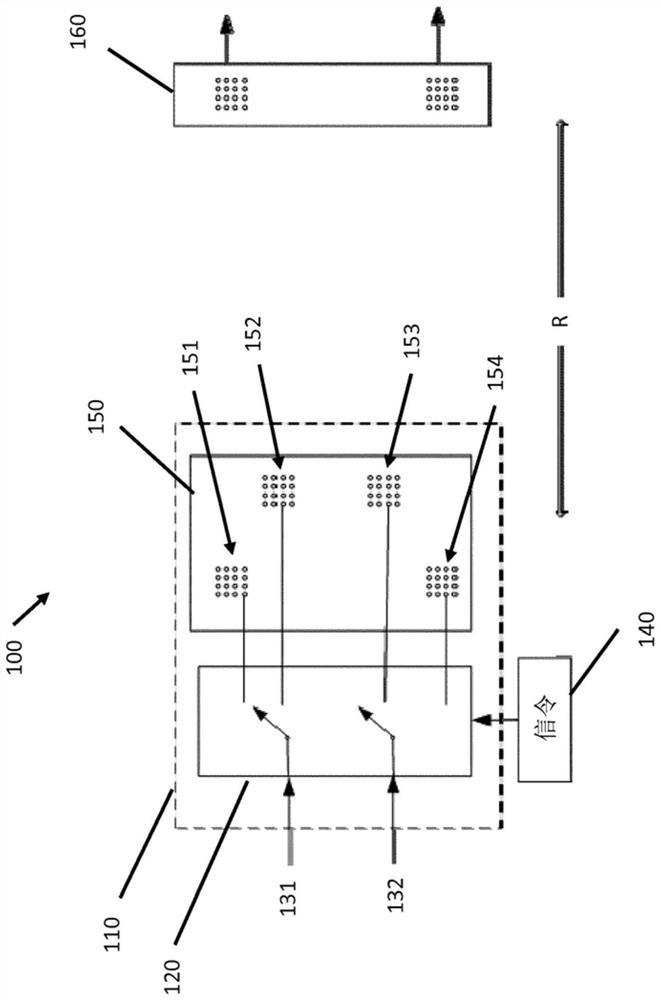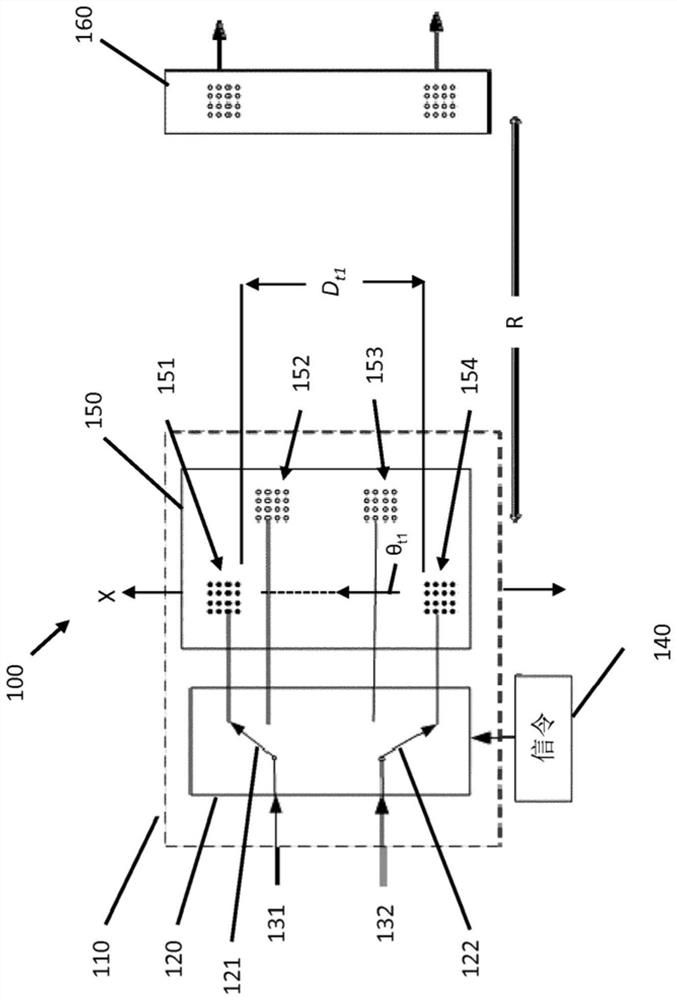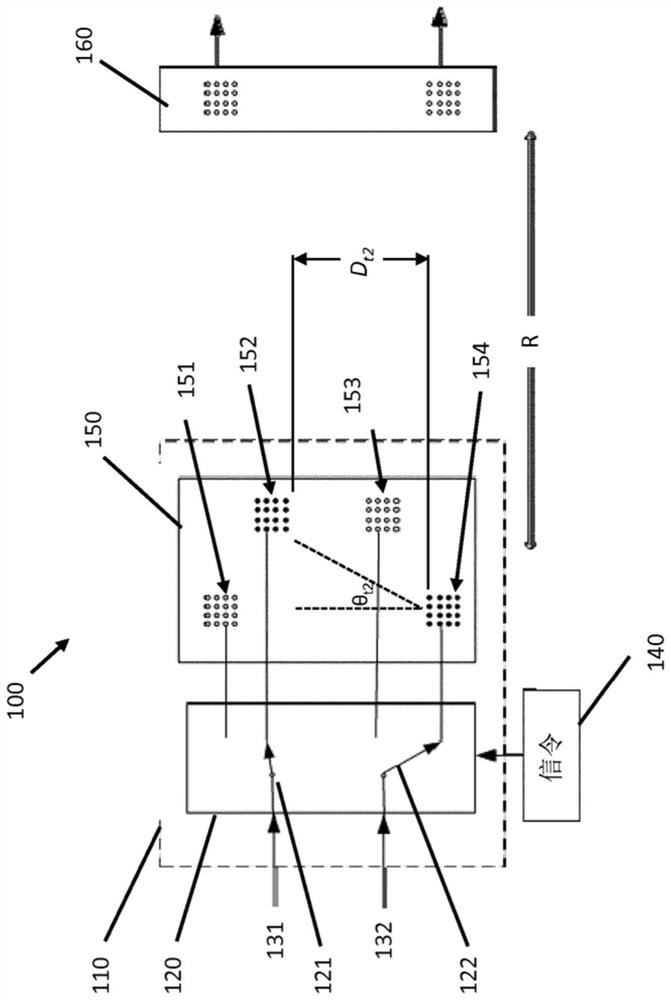Method and apparatus for line-of-sight antenna arrays
An antenna array and antenna sub-array technology, applied in diversity/multi-antenna systems, radio transmission systems, space transmit diversity, etc., can solve the problems that it is difficult to achieve the maximum or optimal channel capacity, and cannot be changed.
- Summary
- Abstract
- Description
- Claims
- Application Information
AI Technical Summary
Problems solved by technology
Method used
Image
Examples
Embodiment Construction
[0037] refer to figure 1 , aspects of the disclosed embodiments relate to dynamically configuring and / or reconfiguring one or more input signals to antenna subarrays of a network node or connections between different antenna subarrays of individual antenna elements or antenna elements. Rather than fixing the configuration of the antenna array, which typically includes the spacing between different antenna subarrays and the downtilt angle of the antenna array, aspects of the disclosed embodiments dynamically change the input signal to the antenna array to Connections between different antenna subarrays and / antenna elements of the antenna subarrays and / antenna elements. Configuration changes, also referred to herein as modes or configuration modes, are configured to achieve near-optimal channel capacity between transmitters and receivers in a Line-of-Sight (LOS) MIMO system. This dynamic change and reconfiguration can be controlled by signaling from network nodes.
[0038] fi...
PUM
 Login to View More
Login to View More Abstract
Description
Claims
Application Information
 Login to View More
Login to View More - R&D
- Intellectual Property
- Life Sciences
- Materials
- Tech Scout
- Unparalleled Data Quality
- Higher Quality Content
- 60% Fewer Hallucinations
Browse by: Latest US Patents, China's latest patents, Technical Efficacy Thesaurus, Application Domain, Technology Topic, Popular Technical Reports.
© 2025 PatSnap. All rights reserved.Legal|Privacy policy|Modern Slavery Act Transparency Statement|Sitemap|About US| Contact US: help@patsnap.com



